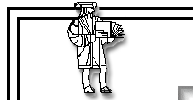 |
 |
|
DamageDamage covers many topics and cannot be discussed here in depth here. I will hit on the high lights of the subject as best I can. NATURAL DAMAGECORROSION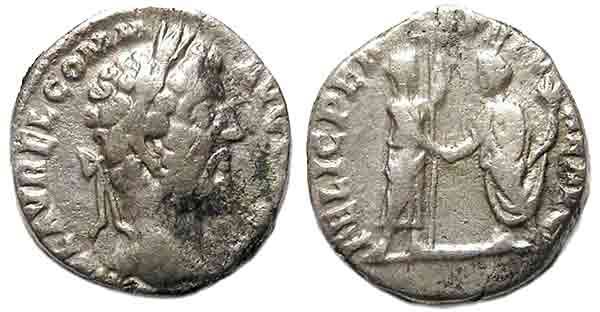
This Commodus denarius suffered corrosion while in the ground. The black spots around his eye and on the right side of the reverse are silver chloride (horn silver) deposits where the horn silver formed of silver from the coins surface pitting the metal below. This coin probably has not been cleaned for horn silver, but where it is thin in front of the forehead and below the chin there is obvious pitting and natural process may have removed some of it, exposing the pits and further removal of horn silver would not bring a good result. In other instances horn silver forms as a surface deposit with the source of the silver a different coin in the hoard and while that coin would be heavily corroded, removing it from a coin where it is a simple deposit will sometimes reveal a perfect surface. One has to be careful cleaning horn silver as often you don't know if it is a corrosion to the coin or a surface deposit until you attempt to remove it. Once corrosion is exposed there is a significant reduction of the value. 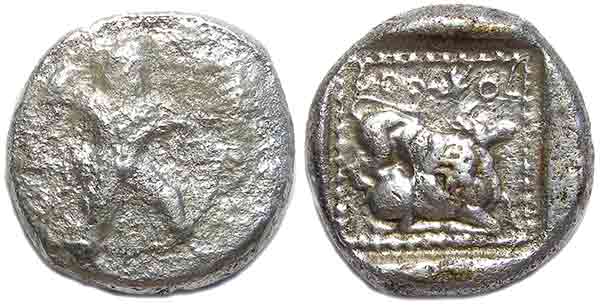
Here is what can result when a coin totally covered with heavy horn silver originating from the coin itself, is removed carelessly. A coin like this is worth only a fraction of what a smooth original surface example might bring. Had it not been a rare type the value would be reduced nearly to zero. The coin came to me like this so I have no idea how bad it looked prior to cleaning, but there is no way to call this a successful cleaning job although it might have been so bad there was no way to clean it successfully back to a good surface coin. 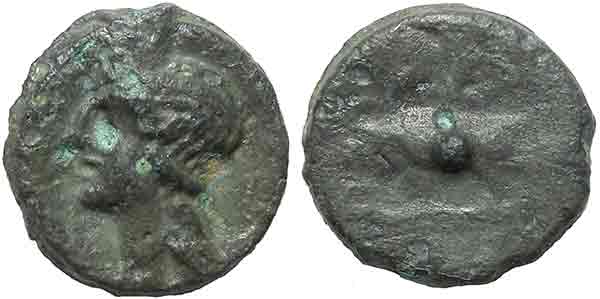 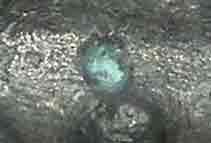
This coin is a Trinovantes Celtic cast potin coin from England, potin being a high tin bronze alloy. When found there probably were green deposits that have been removed other than in few protected areas around the bust. These appear to be stable so will not spread and are not a problem. At the middle of the reverse is a brighter green in the middle of a corroded pit. The brighter green inside the pit suggests a non-stable form of copper carbonate known as bronze disease which results from chloride ions impregnating the surface, which in the presence of humidity slowly converts copper to copper carbonate which is the green powder. Stable green areas are hard and do not spread. Bronze disease is soft, powdery and easily removed with one's finger nail. If nothing is done the bronze disease can slowly destroy the entire coin, leaving only a pile of green powder. There are ways to neutralize bronze disease but unless you are willing to take the time and effort to learn how I recommend not buying such coins. 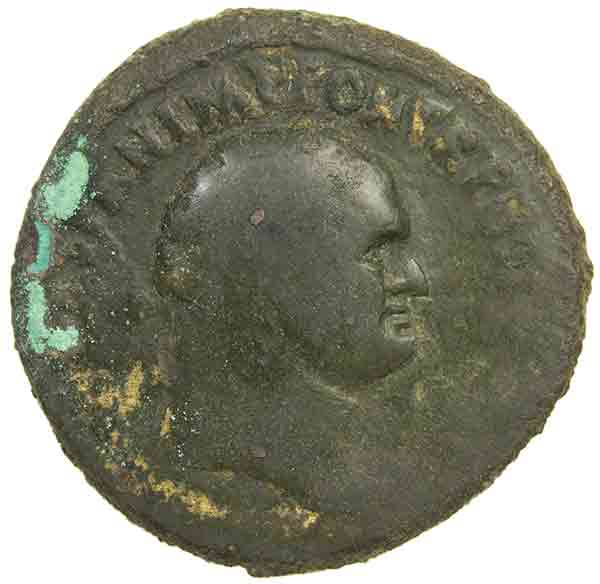
This Titus sestertius has an advancing case of bronze disease and here you can see the typical powdery look. Click on the image for a closer look at the bronze diseased section. Bronze disease has a major adversely effect on a coin's value. 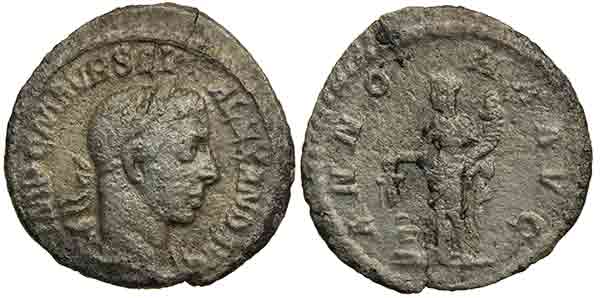
This Severus Alexander denarius is corroded over its entire surface. I suspect this is the result of burial in corrosive soil, although it might have been cleaned in acid. No matter the cause, you can see what it does to the esthetic qualities of the coin. Both silver and bronze coins are susceptible to this. Gold coins generally do not corrode. CRYSTALLIZATIONCrystallization is a natural process that occurs to many silver coins over time. The purer the silver, the more likely they are be internally crystalline. 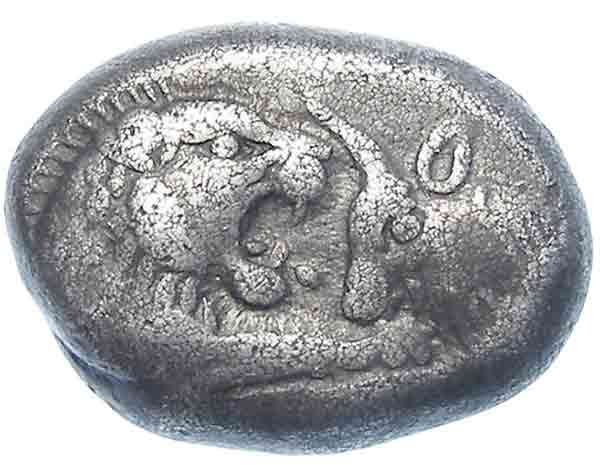
The surface of a coin is highly stressed during striking and stressed metal normally does not crystallize. Internally the less stressed metal can be heavily crystallized over a perfectly smooth skin with no crystals exposed. When part or all of the skin is removed by corrosion, abrasive cleaning or even chipping, one gets exposed crystals as on this early Persian siglos. Appearing similar to corrosion, these crystals form a regular pattern, rather than random holes of corrosion. The effect on the esthetics is similar to mild corrosion, so the effect on the value is also similar. Coins that are 95% or higher silver, and over 500 years old will always be internally crystalline. Below 95% pure they might be crystalline depending on the conditions of burial. Crystallization weakens a coin making it more susceptible to chipping or breaking is miss-handled. Normal handling will rarely cause a problem, but it is best to assume any ancient silver coin is internally crystalline so slightly fragile so should be handled carefully. ANCIENT DAMAGE BY MANMan-made ancient damage occurs in many ways, and in most cases the ancients did not see it as damage, but rather testing a coin to be sure it was official, or converting it for another purpose or marking it with a control or ownership mark. There are specialized collectors who seek out coins like these, although that does not usually make them worth as much or more than ones that were not damaged in ancient times. 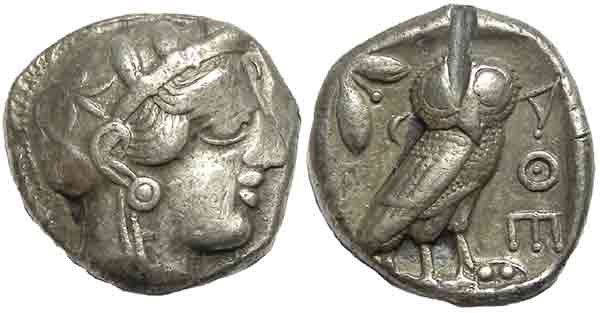
This coin has been test cut with a chisel to determine if it is solid silver or just silver plated and once determined to be solid silver continued to circulate like this. One see's many ancient silver and occasional gold coins with similar cuts, and I have seen a coin similar to this that was cut into five times. 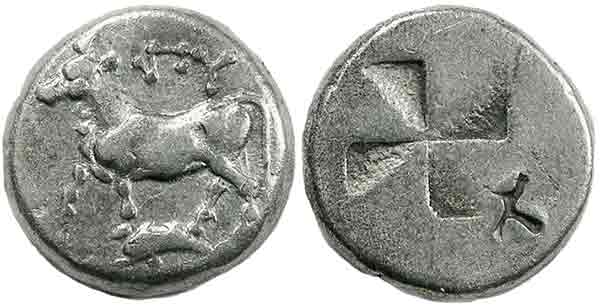
Although not as intrusive as a test cut, there is a smaller test punch in the lower right of the reverse on this Byzantion siglos, also probably to look inside for evidence it might only be silver plated. 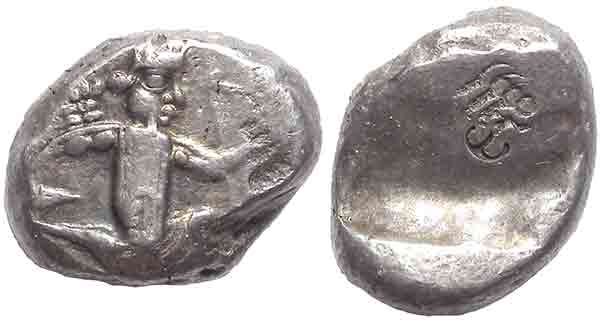
The reverse of this Persian Siglos has a cluster of small stamps on the reverse, and possibly one indistinct one on the obverse below the hand. They do not go as deep as a test cut or punch so would have been to prove a coin was not plated, and seeing 5 or more different ones on the same coin is not unusual. It is possibly they were to mark a coin someone had examined and determined to be acceptable, so that person would not need to check it again, but there are other possibly reasons for doing them. These are commonly known as banker's stamps but could have been applied by anyone. Generally banker's stamps will reduce the value of a coin somewhat, although in this Persian series they are on such a high percentage of the coins that they are generally just accepted as normal unless in positions that disfigure the main design. When they occur on coins that normally would not have them, the do detract from the value. 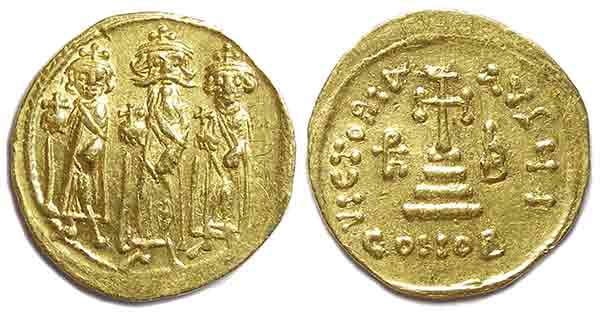
Another type of ancient damage is graffiti where someone intentionally scratched something into the coin, usually a few letters or a geometric form. This is usually seen on gold and sometimes silver coins, but is unusual on bronze coins. It would be easy to overlook the graffiti on this Heraclius solidus as it is very light, but if you look closely at the right side of the obverse you will see some Arabic letters: 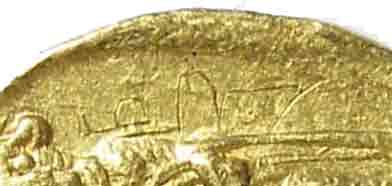
Most collectors would find this detracts from the coin's eye-appeal and thus its value. Graffiti on a coin like this should always be mentioned in the description as it is easy to overlook it with a coin in hand, and it might not even be visible on an image. Failure to do so is good grounds for returning a coin for a refund. 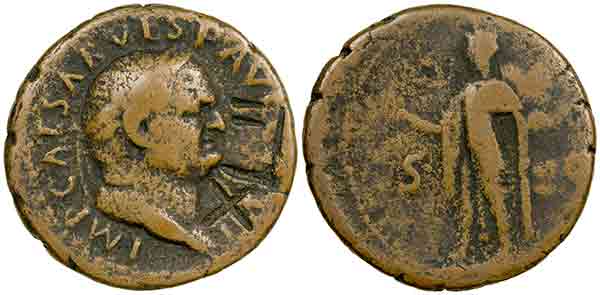
Not all graffiti on ancient coins need to considered damage. This Vespasian As was marked XLII by the Vandals by Ostrogoths to change the denomination to 42 Numis, about 400 years after it was minted. This particular coin is worth far more than it would be without this mark. This falls more into the subject of counter marking than damage, which is not a subject I will address on this part of my website. 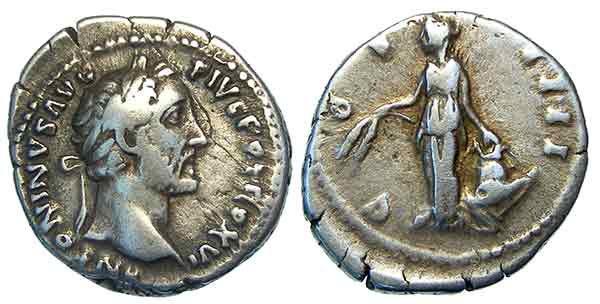
This Antoninus Pius denarius grades Fine and many collectors would find it a perfectly acceptable example for wear, but it has a very long scratch in front of the portrait. The toning in the scratch suggests it is not recent and may have happened when this coin was in circulation. While part of this coins history, it is a significant detriment to the quality no matter if it is an ancient or modern scratch. Scratches and cracks can look similar on an image, but a crack will always go all the way through a coin and show on the other side. A scratch will only be on one side. 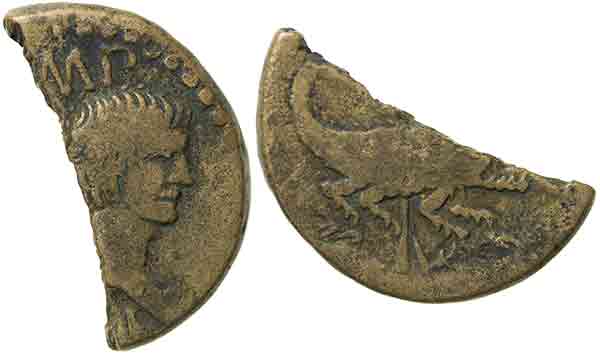
A Nemauses dupondius was intentionally broken/cut to turn it into two As, one of which you see here. These are commonly found this way, nearly always broken between the two portraits, only one of which is on this specimen. These are still collectable like this but at a fraction of what a whole specimen would bring. Other coins that look like this would be worth nearly nothing. MODERN DAMAGE BY MANOf a more serious nature is damage inflicted in modern times. Some is accidental such as a spade hitting a coin being excavated. Some are damaged through improper cleaning leaving a very unnatural surface and sometimes scratches and scrapes from sharp tools. Some are damaged mounting the coins for jewelry in the wrong types of mounts that damage the edges or do not protect the coin from wear. A more insidious modern damage is tooling (also known as strengthening) were an engraver carves designs that not present due to either wear to strike. Some even attempt to change the design attempt to make the coin appear a rarer type than it actually is. Heavily tooled coins tooled coins come very close to being fakes and while the eye-appeal might be improved, the value is greatly diminished. 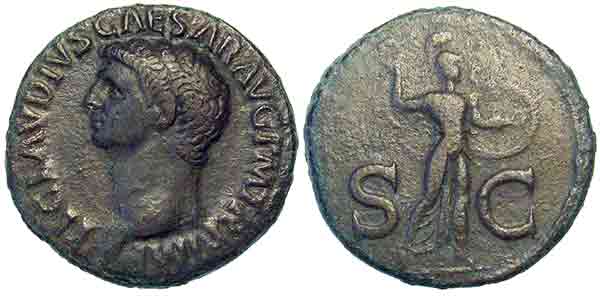
At a glance this Claudius As appears to be in a grade of VF with good hair detail on the obverse and Fine on the reverse. However it would be unusual to see good hair details on a coin with the reverse this worn. 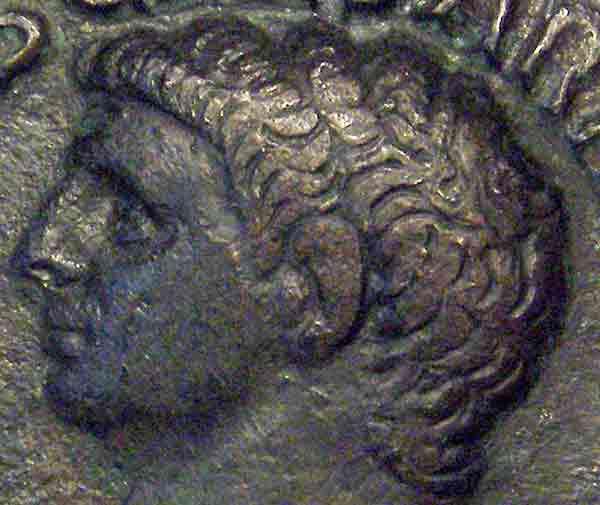
To the experienced eye used to the style of Claudius As it is immediately apparent something is wrong with his hair lines, as they are both odd looking and far sharper than the overall coin. The hair was probably worn flat in the middle and missing details were replaced by a modern engraver attempting to raise the grade of this coin. This coin should be valued at far less than one naturally grading VF or even Fine. Another form of tooling is to smooth rough areas either on the designs or in the fields. 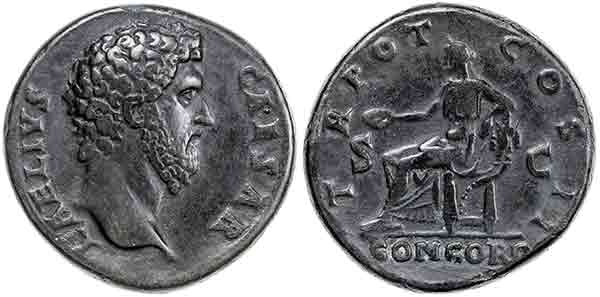
The entire surface of this Aelius sestertius has been polished smooth, probably to hide either a very rough surface or improper cleaning. Every suface has an unnatural smooth appearance no natural ancient coin would exhibit. An artificial black patina was been applied to cover any smoothing marks. This coin is genuine but worth a fraction of what a natural looking specimen would be. Tooling and smoothing are rare on silver and gold coins as the process leave clear marks that generally are obvious and look very bad as they cannot be covered up with artificial patina. It is very common on bronze coins and a very high percentage of the upper end large bronzes have had something done to them. Finding fully natural large bronzes is not a challenge and recently there has been more acceptance of minor smoothing than there used to be. 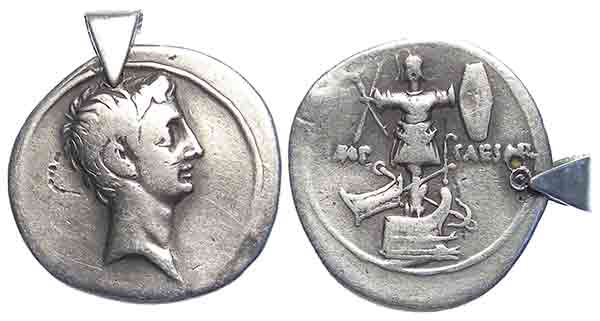
Another type of damage is marks seen on coins once mounted in jewelry. This Augustus denarius was drilled so a modern bale mount could be attached with a pin through the hole. This type of mount is obvious and dramatically affects a coin's eye-appeal and value. One should look closely at coins before buying them just be certain they have not be holed and later repaired by plugging the hole. 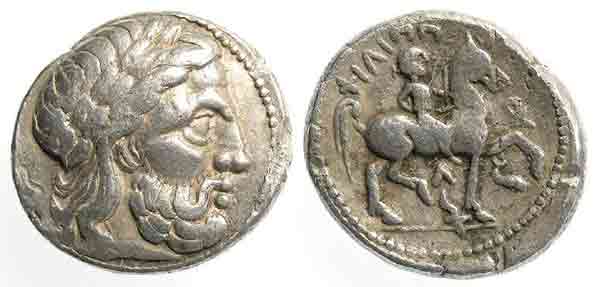
This Celtic imitation of a Philip II tetradrachm shows marks at points around the edge from pressed on claws of a jewelry mount. We cannot be 100% certain when the mount was on the coin, and an ancient mount is possibly, but generally a four clawed mount will be modern. A type of mounting I have not illustrated is a filed off edge mount where a bale was soldered to the edge and then removed. These can be either obvious or difficult to spot depending on how well they attempted to hide the filing. it is always best to examine the edge of a coin for those types of marks, as they do affect a coins value. REPAIRED COINS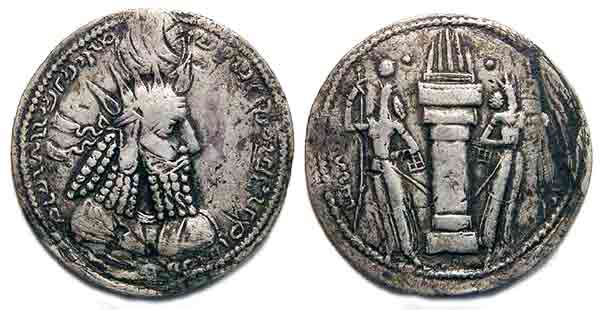
At first glance this Sassanid Shapur drachm suffers only from patchy toning. Looking closer at the reverse right and obverse just below the bust, one sees bold dark lines where there is a solder repair to re-attach a piece that was broken off. Artificial toning was applied to hide the repair. Broken and repaired, this coin is worth only a fraction of an intact example. There are many types of repairs done to damaged ancient coins. Holes can be filled, breaks soldered, scratches polished out. They are usually fairly easy to spot if you look carefully, and all affect the value. Some coins are found with edges corroded off, or large corrosion pits, and have been repaired with resins or low melting temperature metals. There must be many ways. 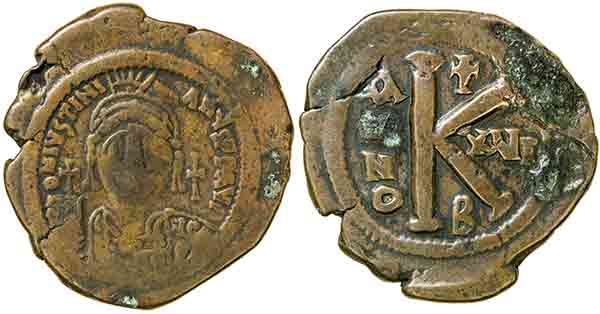
I bought this coin in about 2002 from the eBay seller Selinos, who sold many such filled coins. Intending it for this page it was more than 10 years before I got around to this update. When I bought it the filling in the large pits on the reverse was grey which I assumed was lead or solder. In 2011 my store was flooded and this coin got wet. It developed bronze disease and the grey turned brown which now looks much like natural cuprite. I suspect it is silver based dental amalgam now converted to horn silver. Improper CleaningImproper cleaning is a difficult subject because by the time a coin appears improperly cleaned we can no longer see what it was like before cleaning. We cannot be 100% it would have been OK to leave it in an uncleaned state, or if cleaning was necessary and we are looking at the best or worse possible out come. 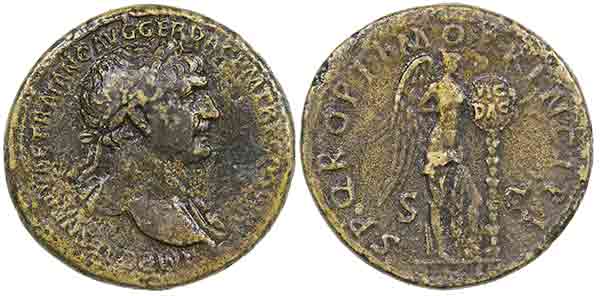
This Trajan sestertius suffered corrosion so could have been used in the natural section but has had most of its patina stripped away, exposing that corrosion. On Trajan's cheek is an area of natural brown cuprite patina where the surfaces are still smooth, suggesting less aggressive cleaning might have retained more areas of smooth cuprite, improving the look of the coin which is why I place it here under improper cleaning. To a collector on a budget this is still an acceptable example of this Victory over Dacia reverse, but had better surfaces been preserved would have a much higher value. 
Next page: Grade Copyright © 2016 R & T Enterprises Ltd. |